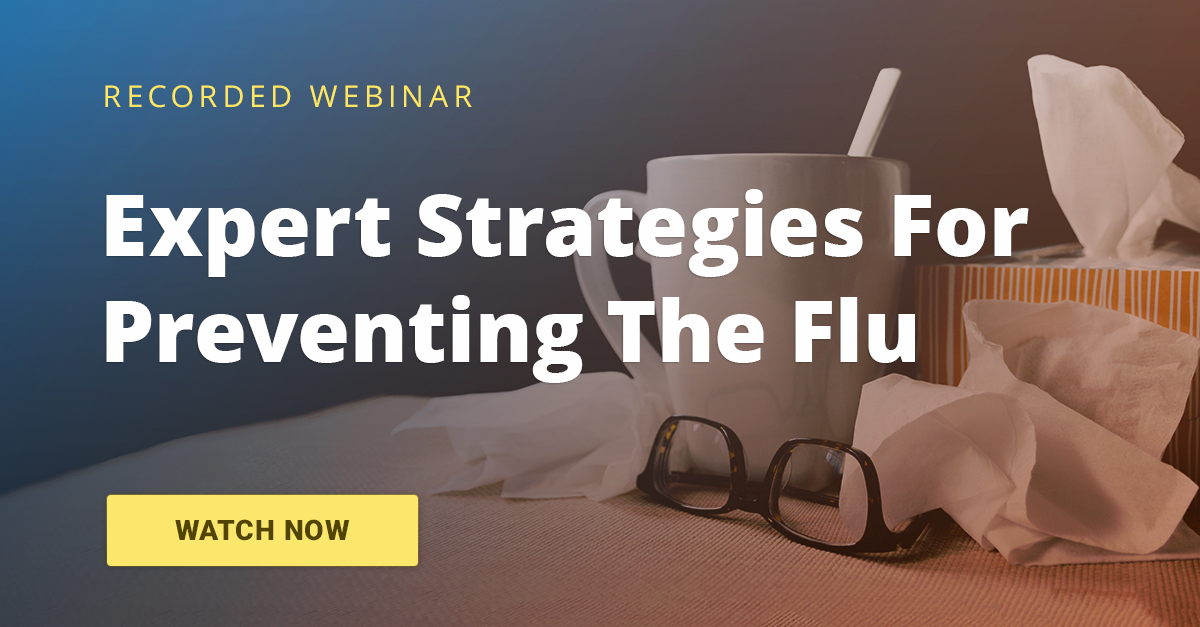3 HR Policies Your Business Needs For Flu Prevention
The flu has a major impact on U.S. businesses. According to the Centers for Disease Control and Prevention (CDC), the flu causes U.S. employees to miss an average of about 17 million workdays, at a cost of $7 billion per year in sick days and lost productivity.
During a recent AlertFind webinar, public health expert Meg Nash, MPH said that risk managers and human resources departments should collaborate on flu prevention strategies to mitigate the impact on their organizations.
“Whether you’re talking about the flu or a pandemic, the effect is the same,” Nash said. “You’re going to have people miss work, you may have people potentially die, you have loss of productivity, and you need to figure out how to keep your business going and minimize any negative effects as much as possible.”
Key Flu Prevention Strategies and HR Policies
There are 3 practical flu prevention strategies that emergency preparedness managers can work with the company’s HR staff to implement:
Ask Employees To Stay Home When They’re Sick
Most flu viruses are passed from person to person through droplets when someone with the flu coughs, sneezes or talks. To prevent the flu from spreading across your workplace, it’s critical people stay home when they’re sick.
Update your sick policy so it’s clear that employees should not come to work if they’re sick, and then make sure you’re enforcing that policy. Some employees will insist on coming to the office, so management must be empowered to send sick employees home.
Implement A Remote Working Policy
A remote working policy is especially helpful for employees who are parents and need to stay home with a sick child. Today’s technology allows many tasks to be accomplished remotely, particularly if people have web-based access to work files and the ability to communicate via video or audio conferencing.
Your organization’s leadership should develop a policy that determines what roles and kinds of projects are best suited for remote working. For instance, tasks like writing a white paper or conducting competitor research are ideal.
Carefully Examine Family Leave And Time Off Policies
Some people feel pressure to come to work when they’re sick because they don’t want to use their time off. This is often the case if people have paid time off but no designated sick days.
During a severe flu season, or if the flu is hitting your organization hard, consider revising your family leave and time off policies. For example, you might reset people’s time off after flu season so they’re better able to take care of themselves. Promoting that culture of wellness benefits both the business and employees in the long run.
The Value of Collaborating With HR
One cannot overstate the importance of working with HR to create a comprehensive plan that incorporates training, policy and planning.
While you can’t control the overall severity of the flu season or the effectiveness of the flu vaccine, you can help prevent the spread of the flu in your organization. Educating employees about the flu and how to protect themselves can limit their exposure to co-workers and could be potentially life-saving.
For more insight from Meg Nash, MPH, about how organizations can enact flu prevention campaigns and keep employees healthy, watch AlertFind’s recent webinar, “Don't Let The Flu Disrupt Your Organization.”

You are well on your way toward protecting your staff and organization.
Take the next step toward protecting your organization by learning more about emergency notification systems and the vital role they play in your emergency preparedness plan.
